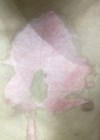Regenerative medicine stands at the forefront of innovative healthcare, utilising the body’s inherent reparative capacities to address various medical conditions. Within this landscape, stromal vascular fraction (SVF) has gained significant attention for its regenerative prowess.
Comprised of mesenchymal / adipose stem cells, fibroblasts, pericytes, endothelial / progenitor cells, and an array of bioactive molecules, SVF emerges as a dynamic and versatile reservoir of cellular components [1]. Stromal vascular fraction is suggested to yield positive results in wound healing, minimising scar formation [2]. Two case studies are presented, shedding light on the clinical application of SVF in conjunction with picosecond (PICO) laser therapy. The PICO laser is renowned for its efficacy in scar therapy [3], and this study specifically aims to evaluate the integrated results of both treatments. The investigation seeks to provide valuable insights into the combined efficacy and implications of SVF and PICO laser therapy for wound healing.

Figure 1.

Figure 2.
Case A: A 47-year-old male presented with a sutured cut wound to the forehead following a glass door injury (Figure 1).

Figure 3.

Figure 4.
Case B: A female patient sustained injuries above her upper lip and on the right side of the chin due to a bike fall (Figure 3).
The traumatic incidents required a comprehensive therapeutic approach to ensure minimal scarring. In addition to standard wound care, they both underwent three PICO laser sessions each followed by SVF therapy, administered three months apart. The PICO laser parameters including a wavelength of 1064nm Nd:YAG, fluence of 1 J/cm², spot size of 8mm, and a repetition rate of 5Hz. Upper legs or abdomen near the umbilicus were chosen for the donor site.
Harvested adipose tissue (30ml) underwent sharp-edged cannula harvesting, followed by centrifugation. Resulting in 30ml of adipose tissue mechanically fractionated, yielding two 1ml SVF portions. Lipoaspirate was decanted, centrifuged (2500g, 2:5 mins), and mechanically dissociated (30 times). After a second centrifugation, 1ml SVF was injected into scars intradermally using an 18G needle.
Discussion
The primary aim of this treatment strategy was to ensure minimal scarring, a critical consideration for both patients. Comparison of before and after pictures at time of presentation within a week from injury (Figures 1 & 2) and at nine months post-treatment (Figures 3 & 4) revealed significant improvements in both Patient A and Patient B’s wound healing processes with minimal scarring. This joint analysis of Patient A and Patient B’s cases emphasises the effectiveness of combining SVF and PICO laser therapy for traumatic wound injuries in an outpatient setting for minimal scarring.
The prompt post-trauma intervention contributed to the positive results observed. Comparison of before and after pictures (Figures 1–4) revealed significant improvements in both Patient A and Patient B’s wound healing processes. The outpatient use of SVF for wound healing, combined with PICO laser therapy, demonstrates promising outcomes.
Conclusion
The integration of SVF therapy with PICO laser treatment has shown promising outcomes in minimising scarring for traumatic wounds. The cases of a male with a forehead cut and a female with injuries above the lip and chin demonstrated significant improvements in wound healing with minimal scarring after the combined interventions. This joint analysis emphasises the effectiveness of the integrated approach in an outpatient setting. Overall, the study provides valuable insights into the potential of combining SVF and PICO laser therapy for enhanced wound healing outcomes.
References
1. Bora P, Majumdar AS. Adipose tissue-derived stromal vascular fraction in regenerative medicine: a brief review on biology and translation. Stem Cell Res Ther 2017;8(1):145.
2. Mbiine R, Wayengera M, Kiwanuka N, et al. Autologous adipose-derived stromal vascular fraction (SVF) in scar treatment among patients with keloids and hypertrophic scars: a systematic review and meta-analysis of current practices and outcomes. Am J Stem Cells 2023;12(5):98–111.
3. Disphanurat W, Charutanan N, Sitthiwatthanawong P, Suthiwartnarueput W. Efficacy and safety of fractional 1064-nm picosecond laser for atrophic traumatic and surgical scars: A randomized, single-blinded, split-scar-controlled study. Lasers Surg Med 2023;55(6):536–46.
Declaration of competing interests: None declared.
COMMENTS ARE WELCOME







